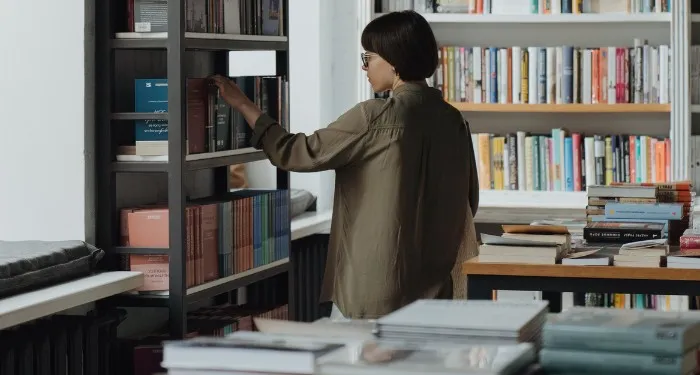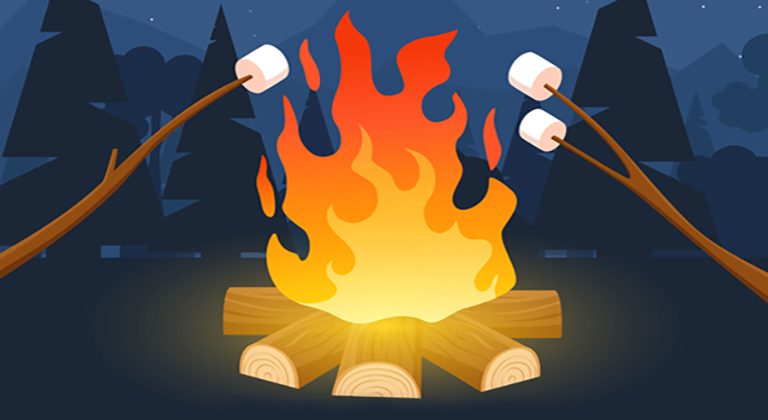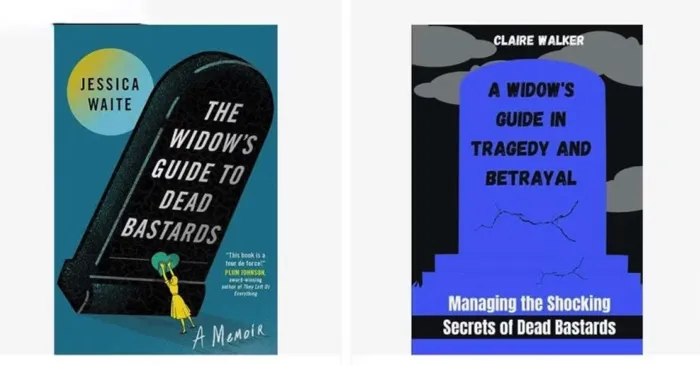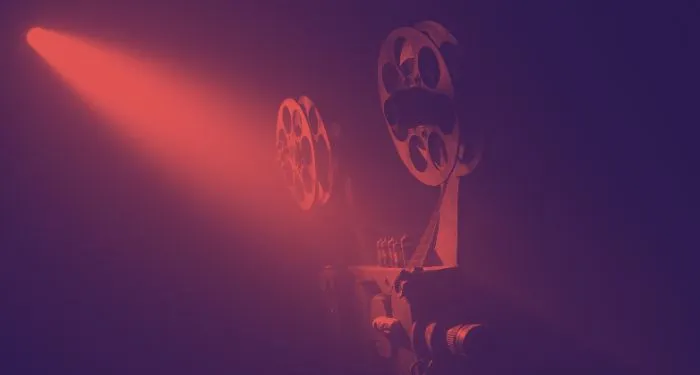A bit of apocrypha that’s floated around the art world for the past several years: when Artforum published one of Jack Whitten’s blazingly chromatic “slab” paintings on its cover in 2012, an eminent historian of modern and contemporary art allegedly wanted to know: Who is this second-rate Gerhard Richter? Like all gossip that sticks around, it struck a nerve on a number of levels. The scholar was Richter’s great champion, having made a career of theorizing him as a kind of “final” painter who went on painting long after the medium had been deemed historically unviable—i.e., dead. His identification of Whitten as Richter’s epigone was an embarrassing mistake, for Pink Psyche Queen had been created in 1973, seven years before the German artist began making his much-lauded squeegee paintings, which in photographs have a striking resemblance to Whitten’s slabs.
Thus a snide remark becomes a wry parable on the fallibility of art historians, at a moment when their authority appears to be at its lowest ebb. But it also makes the larger point that until very recently most people did not know Whitten’s paintings and had never even heard of him. This was all the more remarkable because he had lived and worked in New York since 1960, was known and respected by almost every abstract painter there, had taught in the city’s major art schools and shown in its galleries, had exhibited his slab paintings at the Whitney Museum of American Art in 1974, and had had a ten-year survey at the Studio Museum in Harlem in 1983.
Despite the apparent similarities between Whitten’s slabs and Richter’s squeegees, they represent independent solutions to the problem of how to paint after Abstract Expressionism and all it had come to symbolize during the cold war (which can hardly have meant the same thing to the two artists). My suspicion is that these bodies of work may actually have very little to do with each other. Whatever might be learned from the comparison, however, one thing is certain: Whitten’s slabs do not declare the exhaustion of painting or its historical stalemate but rather constitute a surging expansion of its possibilities.
In the painting-saturated present, any attempt to explain how devastatingly the “death of painting” rhetoric dominated the last quarter of the twentieth century sounds like a babbling conspiracy theory. But it really happened, and it reverberated in art schools and magazines well into the first decade of this century. A series of revisionist exhibitions slowly began to shift that rhetoric by letting a new generation see for itself painting’s continuing vitality. There was the internationally traveling show “High Times, Hard Times,” curated by the art historian Katy Siegel in 2006, which looked at experimental abstract painting in Lower Manhattan in the late 1960s to mid-1970s, chiefly by women and sexual and racial minorities who saw the intertwined mental and physical processes of painting as a mode of liberation. These underappreciated artists, including Whitten, Harmony Hammond, David Diao, Howardena Pindell, and Dorothea Rockburne, have only recently attracted the commercial and institutional attention they deserve, and the show’s catalog has been a much-used handbook for art students and smart dealers alike.
Among this group, Whitten’s slabs stood out. Word got around. He secured his first gallery representation in years, Alexander Gray in Chelsea and then Zeno X in Belgium. A tight solo presentation of his work was quickly organized at the PS1 Contemporary Art Center in Queens in 2007, and he was increasingly included in important museum group shows, such as “Blues for Smoke” at the Museum of Contemporary Art in Los Angeles in 2013. His first retrospective, “Five Decades of Painting,” was in 2014 at the Museum of Contemporary Art San Diego. (It traveled, but not to New York.) Still, it took his joining the international mega-gallery Hauser and Wirth for the tide to turn definitively, which should be greeted with gratitude and some skepticism about the market as a bestower of “greatness.” Whitten’s first exhibition with the gallery in New York in 2017 contained new paintings that were among the strongest he’d ever made; they had a shimmering grandeur that dispelled any whiff of cynicism around his blue-chip “rediscovery” as a neglected master. In this case all the PR hype had the virtue of being true. But the moment of triumph was bittersweet: by then he was ill, and he died less than a year later, in January 2018, at the age of seventy-eight.
In the aftermath of his death the art world machinery kicked into overdrive, with a pair of the marquee museum shows that had eluded him for so long. “Odyssey: Jack Whitten Sculpture, 1963–2017,” opened at the Baltimore Museum of Art and traveled to the Met Breuer in 2018; four years later “Jack Whitten: The Greek Alphabet Paintings” opened at Dia Beacon. A large volume of his unpublished writings edited by Siegel, Notes from the Woodshed (2018), became ubiquitous in artists’ studios; it was soon joined by Jack Whitten: Cosmic Soul (2022), a scholarly monograph by the art historian Richard Shiff. And now, finally, the Museum of Modern Art has mounted “Jack Whitten: The Messenger,” a retrospective of paintings, sculptures, and drawings curated by Michelle Kuo that allows the artist to be seen in full for the first time.
Whitten was born in Bessemer, Alabama, just outside of Birmingham, in 1939, to Annie Bell, a seamstress, and Mose Witten, a coal miner, under what he referred to as “American apartheid”: total segregation enforced by ever-present racial violence. Mose died when Jack was five, leaving Annie with seven children to raise on her own. The family was industrious by necessity and musical by nature. Jack played tenor sax in the high school marching band and in a dance band called the Dunbar Jazzettes. A teacher set him up with a job painting signs for department stores advertising weekly sales. He made flyers and backdrops for school events and was commissioned by an activist to paint a protest poster depicting a black man bound in chains, for which he was paid fifty cents.
It was a coup when he was accepted on a work scholarship to the Tuskegee Institute, where he joined the ROTC and was a pre-med student on track to become an air force doctor. That career path abruptly ended in his second year, during a class on target selection for bombing campaigns. He explained later that it was as if something touched him, in the way southern people describe a spiritual calling. In a daze he stood up and said out loud, “What the fuck am I doing here?” Against everyone’s strenuous objections he dropped out and transferred to Southern University in Baton Rouge to study art. He closely followed the civil rights movement—he had met Dr. Martin Luther King Jr. while he was still at Tuskegee—and co-organized a nonviolent protest. There he was confronted, he said, with the face of true evil, as he endured all manner of verbal and physical assault. Traumatized, he threw everything he owned into a lake and boarded a Greyhound bus to New York City.
In the fall of 1960, at twenty, Whitten was admitted to the Cooper Union and found himself in the heart of Bauhaus art and design pedagogy. He was the only Black art student in his class, and it was his first time in an integrated classroom, not to mention in close proximity to white people without having an immediate sense of threat. Robert Blackburn ran the printmaking workshop and swiftly brought him to meet Romare Bearden, thereby introducing him to an earlier generation of Black artists in the city that included Jacob Lawrence and Norman Lewis, who became early mentors and lifelong friends. But Whitten’s greatest artistic inspirations were the still-reigning New York School painters, beginning with Arshile Gorky. He saw in Gorky, the Armenian immigrant who elevated his childhood memories to the level of myth through his own hard-won abstract language, a way forward. He repaid this debt with Quantum Wall, VIII (For Arshile Gorky, My First Love in Painting) (2017; see illustration at right), his last finished work, which was hanging on his studio wall at the time of his death.
His entry into the multiracial bohemia of New York’s Lower East Side threw his background into relief in unexpected ways. He later characterized his art from the 1960s—such as Birmingham 1964 (1964), a small mixed-media work in which a newspaper photograph of a protester being attacked by a dog erupts through a piece of what looks like charred aluminum foil—as grappling with the problems of “identity.” At the same time he produced a number of enigmatic dark paintings in which swells of pale paint had been pushed through a thin cloth, producing what look like abstract photographs in the manner of nineteenth-century spirit photography, with names like Christ and Psychic Eclipse and a numbered series of “Heads” including Head IV Lynching. These modest works are like glimpsing a visage in some dully reflective glass.
In an effort to understand the geometrical structure of African art, Whitten asked his sculpture teacher, the Japanese American artist Leo Amino, to teach him the rudiments of wood carving. In the summer of 1965 he produced two Jug Heads out of American elm blackened with shoe polish, which were connected to the rich Black American visual tradition—folk and outsider arts—of his childhood. By the end of the decade, for his first solo show at Allan Stone Gallery in 1969, he was making bright, fluent, all-over abstractions, including Garden in Bessemer VI (1968), a personal recollection in homage to Gorky’s Garden in Sochi, and a series of memorial paintings titled Martin Luther King’s Garden, in which faces and other imagery flicker within calligraphic overlays.
Whitten was working in the studio and reading philosophy with fevered intensity, while picking up gigs as a cabinetmaker to support himself and shouldering the financial and emotional responsibilities of his marriage to Florence Squires, which fell apart a few years after their daughter, Keita, was born. He later summed up his experience of the 1960s:
Carl Jung, Freud, Nietzsche, Heidegger, Hegel, Husserl, Joseph Campbell, Eastern philosophy, Zen, Black Nationalism, Vietnam, urban riots, political assassinations, drugs, sex, family, racism, and painting all contributed to a massive personal meltdown in 1968.
In response he saw a psychiatrist, started studying karate and Hatha yoga, and became, for a time, a vegetarian. He also married Mary Staikos, a classmate from Cooper and an artist who became a leading paper conservator. Their daughter, Mirsini, was born in 1972, and the couple remained together for fifty years.
Staikos, a first-generation Greek American, had never visited her ancestral home in the Peloponnese; they planned a trip for the summer of 1969. Two days before leaving Whitten had a dream of a dead tree still rooted in the ground like Odysseus’s bedpost: he was to find this tree and carve it. Scouting around for the cheapest possible accommodations, the couple ultimately ended up in southern Crete, and in the center of the small village of Agia Galini he saw the tree, just like in the dream. He soon found the man who owned it and received permission to carve. Amid the beauty of the Mediterranean, enjoying octopus and raki, Whitten experienced an absence of the racism he’d known his entire life. By the end of that summer the couple had become local celebrities and were accepted by the village like family. This inaugurated a cycle—summers on Crete, where he carved, gardened, and fished, then a return to New York City to paint, write, and teach—that they repeated for the rest of their lives.
Since he’d first arrived in New York, Whitten had haunted the city’s nightclubs in pursuit of jazz, which Mary recalled as “the background music” of their lives. He heard Thelonious Monk, Ornette Coleman, and Miles Davis at the old Five Spot and was friends with Cecil Taylor, Albert Ayler, and Pharoah Sanders, among other musicians. Whitten had sold his own tenor sax by 1963, deciding instead to embody in visual form his understanding of jazz’s musical structure—one of high-driving abstraction that opens into almost unfathomable freedom. One moment that reverberated for him for decades was a conversation with John Coltrane, who described his compositions as a “wave.” Whitten translated these “sheets of sound” into Light Sheet I (1969), a large unstretched canvas in which enormous silk-screened gestures create diaphanous veils of yellow, pink, purple, and gray over nested squares.
At that time New York’s reigning god of painting, Willem de Kooning, in his sixties and at the height of his power, was producing a body of work that combined muscular action and aching sensitivity in agile yellows, pinks, grays, and blues. Without seeming to refer to anything but paint itself, he could conjure the transitory effects of the landscape, of sunlight on water or sand, of living bodies and sensate flesh, or the palette and contours of Raphael or Titian—not just the look but the feel of them—effects that adamantly remained just paint on a flat ground. Regardless of the labor involved, de Kooning wanted these works to appear effortlessly fast, like “a wind blowing across the surface.” They remain to this day the highest achievement in gestural abstract painting.
The lyrical hand of Whitten’s 1960s paintings betrays de Kooning’s heavy influence, which he became increasingly desperate to escape: “As I learned more about painting, [de Kooning’s] signature gesture in painting not only attracted me but I became obsessively entwined in his method. I struggled to wean myself from hero worship.” Returning from Crete refreshed, Whitten set out to approach the canvas with other tools he had on hand: an Afro pick and a carpenter’s saw, with which he raked the surface to create patterns. These new works bore titles like Homage to Malcolm (1970), a large dark triangle radiating out from or receding back into two smaller triangles at the center, with subdued flashes of reds, greens, and blues enacting a black iridescence.
De Kooning’s marks were big, so Whitten would have to find a way to make them bigger; de Kooning’s paintings were fast, so he’d have to figure out how to make them faster. His solution was ingenious. In his studio on Broome Street he constructed a perfectly level fourteen-by-twenty-four-foot platform so he could work horizontally like Jackson Pollock, attaching unstretched canvas to it and then precisely controlling the flow and direction of poured paint. He built a series of large squeegee devices that he called “developers,” wide enough to drag across the entire surface with one pass. By adding weights and changing their blades, he could have complete control. Experimenting with the proportions of gel mediums, pigments, and chemical additives to speed up or slow down drying, he would build layers of color. Then, in a single motion, he’d pull the developer across the painting, making horizontal streaks that ripped open pockets of color, with the layers of pigment suspended in varying densities of translucent plastic. This swift action involved his entire body and required Zen-like concentration, almost literalizing de Kooning’s “wind” to produce the picture.
This wasn’t a rejection or a critique of de Kooning but an astonishing invention inspired by the challenge he posed. Whitten’s accelerated sense of speed and simultaneity, combined with his matter-of-fact mechanisms and custom-made materials, only deepens the mystery, because the longer a viewer looks, the harder it becomes to understand exactly how any given effect is achieved. (Sometimes he even passed over the uneven surfaces with a razor-sharp carpenter’s plane, further revealing colors and concealing process.) His relentless experimentation with materials, including working directly with manufacturers to create his own unique paints, paid off. Fifty years on, the surfaces remain immaculately fresh.
Once dry, the canvas was stretched over a wooden frame and stapled on the back so that the painted swipe seemed to encompass the entirety of the rectangular object, starting behind the wall, wrapping around the side and across the front, then disappearing again, as though it were just a momentary excerpt of a continuous flow. This aspect would have been more salient at the time of these works’ inception, when there was major discussion about the relation of painting to sculpture. In response to this critical awareness of a painting as an object, the creation of what Whitten called “slabs” was a novel way of carrying gestural painting forward.
He began to place objects such as wires and stones (what he termed “disruptors”) beneath the canvas, so that when the developer was pulled, they created a shadowy indent, a visual stutter. The outcomes are a tightly calibrated marriage of composition and chance. This technique allowed him to abandon brushstrokes, which, for better and worse, are conventionally read as marks testifying to the presence of their specific author, with all the personal psychology that implies; Whitten thought of brushstrokes as relational, and that visually following them was tantamount to a disclosure of process, something he wanted to avoid. His new method allowed him to retain painterly touch without the usual traces of the painting’s maker. Each slab, exceeding the size of an individual body, creates a propulsive color world and evokes the striations of geological time, the horizonless glitter of deep space, or the limitless expanse of the mind. Above all, these paintings speak to a mystical location beyond the confines of a self.
Whitten’s slabs—such as Delacroix’s Palette (1974; see illustration at top of article), in which oranges and reds glow ember-like against a matte, slightly metallic, pewter-gray surface—have a depth that seems to hold the light rather than radiate or reflect it. In the mid-1960s an oracular phrase occurred to him, and he wrote it in his studio notes and copied it onto his studio wall: “The image is photographic; therefore, I must photograph my thoughts.” It seemed to speak to the instantaneous self-evidence of the swipe of the developer, to photography as “writing with light,” to the photographic image’s undeniable flatness that nevertheless opens into depth, and to the compression of time and space. All of these readings were implicit in the slabs.
Another artist would have happily gone on making such works for the rest of his life. However, after only a couple of years Whitten’s method evolved again: he drastically changed the appearance and parameters of his paintings by limiting his colors to black and white, thereby opening up all the resulting grays. The racial shorthand was there, but so was his insistent rejection of the binary in favor of the complexities of blur. He made a number of densely variegated paintings that looked increasingly like technological images (X-rays, radar), experimented with Xerox process and toner, and was fascinated by advances in physics and communications apparatuses. Using his singular blend of extremely viscous, translucent graphite paint, which he called “slip” like the watery clay used in ceramics, he raked overlapping grids in which zones of subtly introduced colors throbbed, alternating the perception of foreground and background. He decided that the grid itself was the DNA of visuality, which could mediate between material reality and the mind, where perception resides.
Whitten’s early engagement with the “image” of abstract painting in relation to photography and other technical reproductions proved prophetic. He saw abstraction as no less a “sign” than any representational image, going so far as to write that it is the equivalent of the “mask” in non-Western cultures; its function is to embody ideas and communicate visually across time. Painting can also resist the flattening effects of photography. Visual art is about perception, he wrote, and our perception is changed by our technology in ways we probably cannot fully comprehend; painting, however, can grapple with those changes, record and combat them, hold the past and the future in relation. Whitten’s belief that painting can provide this essential service to the world partly accounts for the inexplicable vitality and ubiquity of painting today: we live in a world dominated by images, digitally dematerialized and endlessly proliferating on screens. But in painting we encounter images as embodied things; painting is a very old technology that we can use to work out our relationship with these images—something impossible to do within the infinitely flickering scroll.
Painting’s great power lies in the fact that it is made of matter; concepts and histories are embedded in it. Yet increasingly Whitten understood this matter in relation to light: how matter creates light from color, modulates it across surfaces, holds it in its depths. This visible light, the essence of the visual itself, comes here from distant stars, and so on the face of the painting there is a “weaving of light,” as he called it, a meeting of near and far. He was after a light that “must define a space, not a pictorial space.” Through rigorous material experimentation Whitten came to believe that he could shape these encounters, moving beyond any previous notion of abstraction or representation, object or painting, reality or illusion. He began making molds of objects—a street grate, a stretch of sidewalk or mesh or cladding, the bottoms of bottles—then casting the impressions in acrylic paints. These relief-like elements, in works such as Bessemer Dreamer (1986), are literally abstracted from life: they record particular moments of touch, with paint that has been shaped by life then cut up and reassembled into art.
Whitten’s last great breakthrough in 1990 harkened back to the slab. He realized that he could transform a slab into units that he called “tesserae,” after the tiles of precious stone or glass used in ancient mosaics. He created them by building layered sheets of accumulated acrylic paint that were then hand-cut into irregular squares or rectangles and affixed to a canvas. As light bounces across their undulating, translucent surfaces, these works, such as Monk’s Kimono (For T.S.M.) (1990), seem to move and shift with the viewer, as texture and detail telescope into larger visual patterns. Whitten’s innovative forms conducted a conversation over thousands of years, evoking Byzantine mosaics and the tiled polychrome of the Babylonian Ishtar Gate as well as satellite imagery and digital data interfaces, creating a visual language with all the formal complexity of jazz unfurling in time and space.
From the beginning Whitten’s work sometimes functioned as a memorial, but as it progressed this took on even greater dimensions. A series of huge dark paintings called “Black Monoliths,” spanning the late 1980s to his death and dedicated to African American luminaries—James Baldwin, Barbara Jordan, Maya Angelou, Jacob Lawrence—are all organized around a central form in nuanced shades of often glittering black, shiny and matte. Other memorial paintings add another notion of abstraction; they honor not only friends and mentors who died but also strangers, such as the monumental 9.11.01 (2006), with which he claimed his own genre: abstract history painting. In his last decades he made art that sought to grieve everything from the Middle Passage to the shooting at Sandy Hook Elementary School. Whitten believed that the contemporary artist can address what it means to be alive today with such an awesome and horrible inheritance, which must be embodied, concretized, if it is to be confronted and changed.
This coincided with his growing recognition of art’s spiritual and ritual function. Taken in its broadest sense, the majority of what we call art around the world has been made in relation to a spiritual practice. By the 1990s, Whitten often wrote in his studio logs that he was seeking to build a place for spirit to inhabit, and that when spirit entered the paintings, they were done:
ONE MUST LEARN TO RECOGNIZE THE PRESENCE OF SPIRIT AND TO ACKNOWLEDGE ITS’ PRESENCE. I ACKNOWLEDGE ITS’ PRESENCE BY CONSTRUCTING AN OBJECT WHICH ALLOWS OR INVITES THE SPIRIT TO REST. THIS IS MY JOB AS AN ARTIST. YOU CAN IDENTIFY THE PRESENCE OF SPRIIT WITHIN A SPECIFIC QUALITY OF LIGHT. THIS AND ONLY THIS IS THE ART OF PAINTING.
He wrestled with the nature of that spirit. Was it ancestral, transmitted genetically, in the blood? Was it divine, moving between people through culture? Or was it, no less mysteriously, a human spirit, the emanation of the viewer’s own mind? Was it specifically Black—as in “soul”—or was it the spirit that sought communion beyond race, nationality, gender, and all forms of “difference”?
He posed these questions to himself in his paintings and writing, and then, in an artist’s version of the scientific method, he carefully studied what he made for answers, one painting at a time. Because his work is an extreme version of painting, little that is important about it can be communicated in reproductions. It insists on direct viewing. What appears to be brilliantly restless innovation is revealed to be rigorous interrogation of what painting, and only painting, can do. The opportunity to see this for ourselves, to test it against our own perceptions, makes the Museum of Modern Art’s retrospective not only one of its best shows in a decade but, if properly attended to, one of its most consequential.
This impact can also be felt in Notes from the Woodshed, an important contemporary entry in a special category of books that chart the inner life of the visual artist’s studio. It is a genre narrowly read but deeply loved, mostly by other artists and by scholars. Perhaps the most famous example is the journals of Eugène Delacroix, a touchstone for the New York School artist Robert Motherwell, who observed:
Delacroix’s alert and cultivated mind constantly rolling, like an ever-changing tide, over the rocky questions of l’art moderne…remained a sustaining moral force in my inner life, as I think it may have in the lives of many artists who, in my experience, are largely preoccupied, when not making art, with thinking about what it is.
This sentiment summarizes the effect of Whitten’s collected studio writing, by the artist who proclaimed “I am the heir to Delacroix” on his studio wall and in his studio log. Written for himself, this record was unknown even to his closest friends. (So were his sculptures, kept private in Crete for almost fifty years, although he maintained that they had the biggest influence on his thinking as a painter.) Toward the end of his life Katy Siegel convinced him of his writing’s importance and worked with him to prepare it for publication. In those pages Whitten wrestles with the problems of abstraction, the nature of light, the symbolism of color, and his place in art history as he attempted to fuse ancient archaeological sites, African sculpture, and Western abstract painting while giving up nothing.
He was not in any way conflicted about his Blackness or the importance of his worldview as a Black artist, and he was painfully aware of the racism that prevented his work from getting the institutional attention and support it deserved, shutting him out of the art-historical record. At the same time he challenged the instrumentalization of his identity and resisted it through his insistence on abstraction. He was also critical of the ways in which certain strains of Black art were gaining commercial and institutional acceptance, writing in 2006, “I have no interest in the autobiographical identity issue bullshit, especially from Black artist. The shit is boring!… Please do not show me anything that doesn’t go beyond the self!” For him the politics of Blackness were infused into his artistic forms and process—as he wrote slightly later, “My identity is compressed into paint as matter”—undeniably present and yet unillustrated, a unifying cosmic vision firmly within the Black radical tradition.
Whitten’s ambition as an abstract painter and his overriding spirituality continue to challenge the discourses of contemporary art. The final entry of his log, from December 27, 2017, less than a month before he died, ends:
Art is the only spiritual form that we can depend on. When politics goes amok, when organized religions become political…we can always depend on art to pull us through. We must make sure the arts will survive for the benefit of all. Support the arts without any forms of restrictions. Art is what artist do. And we are the canaries in the coal mines. So all of the artists out there, keep sniffing the air for warning signs of any pollutants…. ART IS OUR COMPASS TO THE COSMOS.





















 English (US) ·
English (US) ·